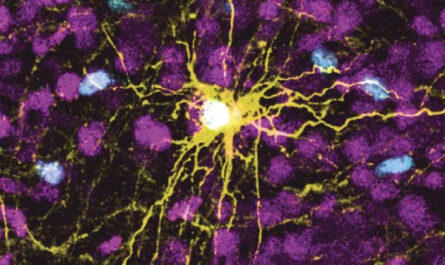A recent study has discovered that the BA.2.86 omicron subvariant of SARS-CoV-2, the virus responsible for COVID-19, can be effectively neutralized by bivalent mRNA vaccine-induced antibodies in the bloodstream. This finding explains why the variant did not lead to a widespread surge as initially feared. However, the study also revealed that the BA.2.86 variant has an increased ability to infect human cells in the lower lung and engages in more efficient virus-host cell membrane fusion. These characteristics are linked to severe disease symptoms.
Publishing their research in the journal Cell, the study’s authors explained that the BA.2.86 variant is the ancestor of the currently dominant JN.1 and has around 60 more spike protein mutations than the original coronavirus. These mutations prompted concerns that the variant would be challenging to contain, similar to the initial omicron outbreak in 2021-2022.
Remarkably, despite the accumulation of 60 mutations, the BA.2.86 variant is not as immune-evasive as the XBB.1.5 variant, which had been dominating the pandemic for months. However, the BA.2.86 variant displays increased infectivity of human lung epithelial cells compared to other omicron variants, raising concerns about its potential to cause severe disease. The variant also exhibits elevated fusion activity with human lung epithelial cells, suggesting it may be more pathogenic than recent omicron variants.
The study’s findings align with reports from the Centers for Disease Control and Prevention (CDC), which indicate that the BA.2.86-derived sublineage JN.1 rapidly gained ground in the United States, accounting for an estimated 44% of COVID-19 cases as of December 23, 2023. BA.2.86 and its sublineages were designated as variants of interest by the World Health Organization on November 22, 2023.
The researchers analyzed blood serum samples from healthcare professionals and first responders who had received monovalent or bivalent COVID-19 vaccines. The results showed that antibodies produced by serum from individuals who received the bivalent vaccine were more effective at neutralizing BA.2.86 compared to other omicron variants. In contrast, monovalent vaccines and previous XBB.1.5 infections had limited effectiveness against BA.2.86.
The researchers emphasized the importance of vaccination, even for those who have previously had a COVID-19 infection, as omicron variants are less virulent than previous variants such as the Delta variant. Natural infection alone does not provide sufficient immunity since vaccine-induced antibodies are approximately 10-fold higher than those generated by infection. Therefore, it is crucial to obtain the newest booster vaccine, formulated with the XBB.1.5 variant, which has shown effectiveness against BA.2.86.
Additionally, the study revealed that a monoclonal antibody called S309, known for its ability to inhibit major omicron variants, does not neutralize BA.2.86. Molecular modeling suggested that mutations in the BA.2.86 spike protein may have altered its conformation, rendering S309 ineffective against the variant.
Further experiments indicated that BA.2.86 may be more likely to cause severe disease compared to other omicron variants. The variant demonstrated greater efficiency at infecting a cell line derived from human lung epithelium, suggesting an increased potential for respiratory tract infection.
The study’s findings underscore the importance of ongoing surveillance for new variants of SARS-CoV-2. Given the propensity for viral recombination, which can lead to variants with increased immune evasion and disease severity, continued monitoring is critical, especially as the pandemic enters its fourth year.
The study was conducted by a team of researchers from The Ohio State University, including virology professor Shan-Lu Liu and first author Panke Qu. The researchers emphasized the need for further confirmation using the actual virus instead of pseudoviruses, which were used in the cell culture studies.
*Note:
1. Source: Coherent Market Insights, Public sources, Desk research
2. We have leveraged AI tools to mine information and compile it




